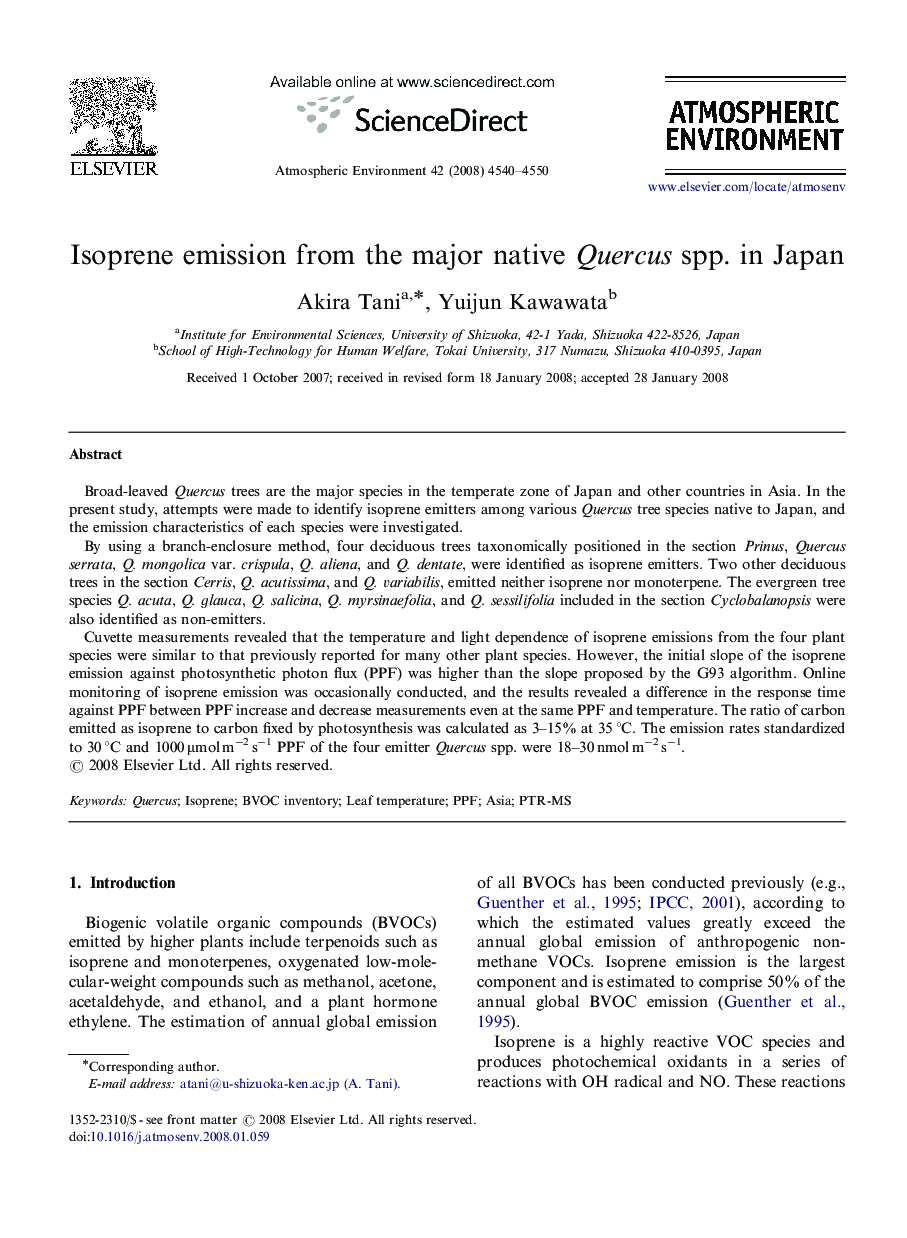| Article ID | Journal | Published Year | Pages | File Type |
|---|---|---|---|---|
| 4442416 | Atmospheric Environment | 2008 | 11 Pages |
Broad-leaved Quercus trees are the major species in the temperate zone of Japan and other countries in Asia. In the present study, attempts were made to identify isoprene emitters among various Quercus tree species native to Japan, and the emission characteristics of each species were investigated.By using a branch-enclosure method, four deciduous trees taxonomically positioned in the section Prinus, Quercus serrata, Q. mongolica var. crispula, Q. aliena, and Q. dentate, were identified as isoprene emitters. Two other deciduous trees in the section Cerris, Q. acutissima, and Q. variabilis, emitted neither isoprene nor monoterpene. The evergreen tree species Q. acuta, Q. glauca, Q. salicina, Q. myrsinaefolia, and Q. sessilifolia included in the section Cyclobalanopsis were also identified as non-emitters.Cuvette measurements revealed that the temperature and light dependence of isoprene emissions from the four plant species were similar to that previously reported for many other plant species. However, the initial slope of the isoprene emission against photosynthetic photon flux (PPF) was higher than the slope proposed by the G93 algorithm. Online monitoring of isoprene emission was occasionally conducted, and the results revealed a difference in the response time against PPF between PPF increase and decrease measurements even at the same PPF and temperature. The ratio of carbon emitted as isoprene to carbon fixed by photosynthesis was calculated as 3–15% at 35 °C. The emission rates standardized to 30 °C and 1000 μmol m−2 s−1 PPF of the four emitter Quercus spp. were 18–30 nmol m−2 s−1.
